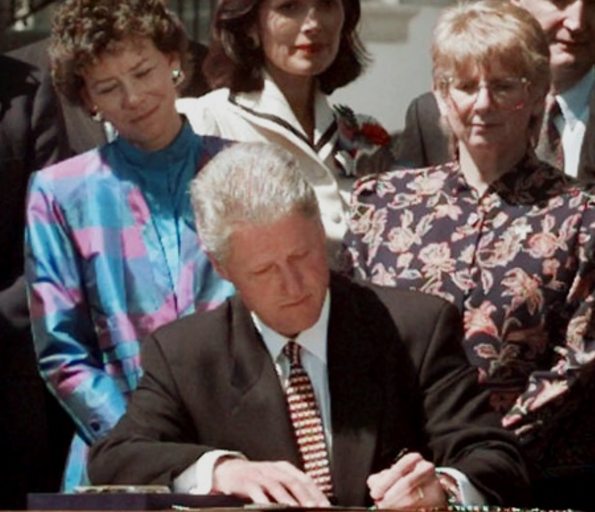The Inside Story of How Bill Clinton Sacrificed the Rights of Prisoners for Political Gain
- By Liliana Segura | The Intercept
- May 7, 2016
- 2 min read
EndFragment
On the eve of the New York state primary last month, as Hillary Clinton came closer to the Democratic nomination, Vice President Joe Biden went on TV and defended her husband’s 1994 crime bill. Asked in an interview if he felt shame for his role passing a law that has been the subject of so much recent criticism, Biden answered, “Not at all,” and boasted of its successes — among them putting “100,000 cops on the street.” His remarks sparked a new round of debate over the legacy of the crime bill, which has haunted Clinton ever since she hit the campaign trail with a vow to “end the era of mass incarceration.”
A few days later, on April 24, a lesser-known crime law quietly turned 20. The Antiterrorism and Effective Death Penalty Act of 1996 — or AEDPA — was signed by Bill Clinton in the wake of the Oklahoma City bombing. While it has been mostly absent from the recent debates over the crime policies of the ’90s, its impact has been no less profound, particularly when it comes to a bedrock constitutional principle: habeas corpus, or the right of people in prison to challenge their detention. For 20 years, AEDPA has shut the courthouse door on prisoners trying to prove they were wrongfully convicted. Americans are mostly unaware of this legacy, even as we know more than ever about wrongful convictions. Barry Scheck, co-founder and head of the Innocence Project, calls AEDPA “a disaster” and “a major roadblock since its passage.” Many would like to see it repealed.
If the Clintons have not been forced to defend AEDPA, it’s partly because neither the law nor its shared history with the crime bill is well understood. AEDPA’s dizzying provisions — from harshimmigration policies to toughened federal sentencing — were certainly a hasty response to terrorism. But the law was also the product of an administration that long before the Oklahoma attack had abandoned its party’s core principles on criminal justice, deciding instead to wield crime policy as political weapon. After the Republicans seized control of Congress in the historic 1994 midterm elections, the Clinton White House sought to double down on its law-and-order image in advance of the 1996 presidential race. In the short term, it was a winning political strategy for Clinton. In the long term, it would help pave the way to one of the worst laws of his presidency.
EndFragment







Comments